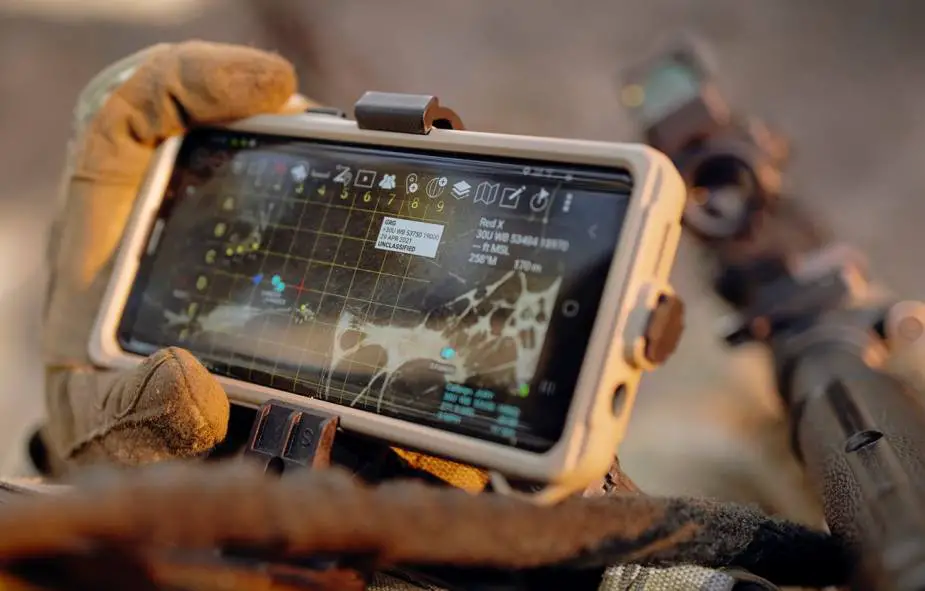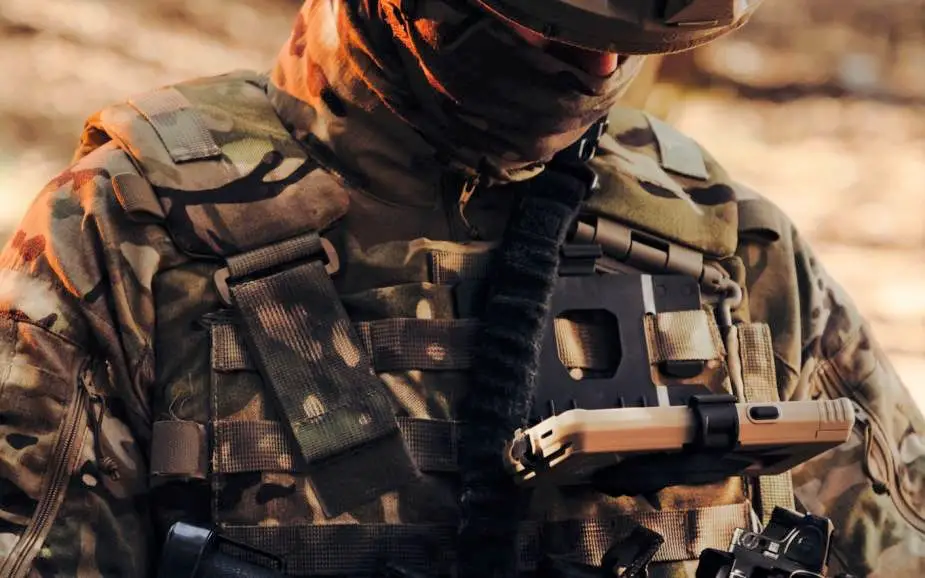British Army experimenting revolutionary means in battle situational awareness
The British Army is experimenting with an innovative digital communications suite that will revolutionise the way soldiers operate in the battle spaces of the future, it announces on its website. Improving their situational awareness or Dismounted Situational Awareness (DSA) is the goal and digital technology is expected to play a vital role in achieving that.
Follow Army Recognition on Google News at this link

The suite will provide the location of soldiers to commanders with pin-point and real-time accuracy, allowing them to visualise geospatial, picture and message data in a way that until now has only been possible in headquarters locations. (Picture source: British army)
A suite of systems effectively made up of a smartphone, network-enabled by the Long Term Evolution (LTE) network and with a centralised power management component, will shortly be delivered to 2 YORKS, the Enhanced Light Forces Battalion who are currently based in Cyprus to trial.
The unit, marking a change from their previous role as Light Mechanised Infantry, is now spearheading the Enhanced Light Forces role and are the only unit in the British Army to do so, forming the new prototype warfighting and experimentation battalion as part of the Future Soldier transformation plan.
The suite will provide the location of soldiers to commanders with pin-point and real-time accuracy, allowing them to visualise geospatial, picture and message data in a way that until now has only been possible in headquarters locations.
The key pieces of information that it digitally and rapidly offers, provides answers to age-old questions fundamental to conducting operations including: “Where am I? Where are my soldiers? Where is the enemy? and What are my orders?
Warrant Officer (Class 2) Liam Donnelly of 4 Rifles, who has been trialling the kit at the recent Project HERMOD rehearsal showcasing Army capabilities of the future, said: “In the future, the Rangers are set to use a DSA system which will enable them to operate in the digital battle space. “The digital battlefield, as it is now, the DSA is just going to allow that real-time information for a commander so that he knows just exactly where everyone on the battlefield is real-time. It is going to allow a smooth and fast flow of information that can track across the battlefield in a lot speedier way than we have been used to in the past.”
Troops’ locations are shown by a dot on the map, they can mark and send the location of enemy forces, send overlays, mark minefields and IED locations, plan operations and send pictures and text as you would do over a mobile phone.
Corporal Philip Mawia, of the Mercian Regiment, also trialling the new suite at Hermod, added: “With DSA, what it does is allows you to just tap on the screen and send that information in a matter of seconds and everyone on the battlefield is connected – and will know all the information that I know.”
Although a soldier will always still need to know how to revert to the fundamental tools of map and compass, the speed of communication that the new technology brings will enable faster decision-making cycles in the tactical environment, ultimately giving the Army a crucial advantage over its opponents.
The equipment is designed to considerably boost situational awareness and mission effectiveness of dismounted company-sized groups of soldiers. Providing a near-real-time overview of the battlefield, it equips the modern infantry soldier with fingertip digital technology of the future, speeds up decision making and operational tempo – and will critically save lives in any future operational settings.

Corporal Philip Mawia, of the Mercian Regiment, , said: “With DSA, what it does is allows you to just tap on the screen and send that information in a matter of seconds and everyone on the battlefield is connected – and will know all the information that I know.” (Picture source: British army)




























